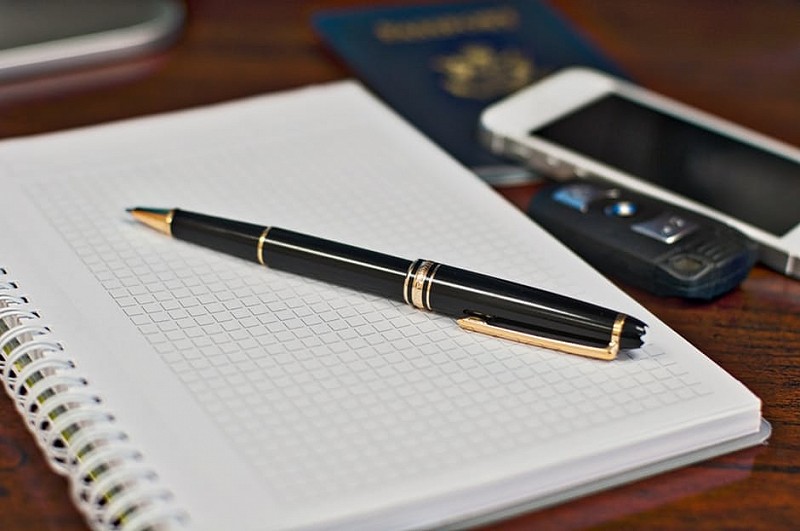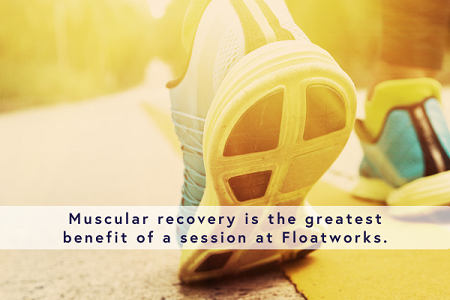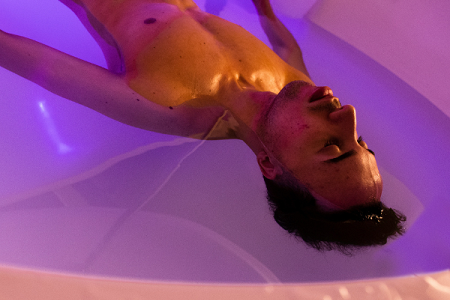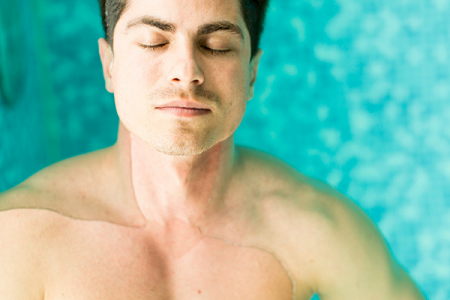Next level stuff: how to set a floating agenda
Advanced tips for those looking to delve deeper into their floating practice.

So you’re now a floating regular? Great! Welcome to the ‘light’ side. If you’re hooked like us, the chances are you’re learning more and more about the benefits of floating as you go, through your own research outside of the tank, and your own experiences within it.
Once you’re comfortable finding your flow inside the tank, it’s worth thinking about setting agendas to make the most of every session. Of course, if you step into the tank without any preparation, you’re still going to feel relaxed and rejuvenated when you come out an hour (or two!) later, but there are a hundred and one uses for floating that benefit from a few bits of preparation or guidance.
Look at it this way: you go to the gym to exercise your body; you float to exercise your mind. And just like when you’re focusing on a particular part of your body in your exercise regime, it’s incredibly beneficial to set a floating agenda. Below are just a few things to think about when setting goals from your floats.
Prepare your mind and body before you float
It’s not cheating! There are a few things you can do before arriving at Floatworks to help you reach that deep state of relaxation even quicker. Try to avoid caffeine in the hours before your float – you’re just creating extra work for yourself if you step into the tank with a caffeine buzz – and remember to eat a few hours before you float. If you float hungry, you’re going to really notice how hungry you are. And remember – if you’re being mindful throughout the day, it’ll be even easier to disconnect when you float. Try a few breathing exercises on your way here, give yourself a body scan on the tube, or even just sit for a few minutes before you step in the tank to gather your thoughts for the float ahead.
A shortcut to the relaxation state
Once you’re inside the tank, consider a few different techniques to switch off that conscious part of your brain.
Breath awareness: Focus your attention only on the breaths going in and out of your lungs. How does the air feel going through your nostrils? Can you feel it filling your lungs like a balloon? Imagine your lungs inflating like hot air balloons, and deflating like bellows. Repeat, repeat, repeat.
Body scans: Work your way around your body slowly, experiencing how every inch of it feels. Start with one foot, work slowly up to your arms, legs, chest, neck, and tell yourself how each part feels. Does it feel warm? Tense? Don’t rush, pay attention to every sensation you experience and process it.
Using the mind’s eye: Imagine shapes, colours and objects separate from your own body is another way of strengthening your control of mental imagery. Start with something simple – a rainbow. How does it affect you? How does each colour make you feel? Build up to more detailed pictures of familiar scenes, people you know and faces you recognise. Think of it like mindful daydreaming!
Be specific, be positive, be present
Whether reciting mantras in your head, or following a visual train of thoughts, remember to be specific, be positive, and be present. Tell yourself how you’re feeling in the present tense: “I am relaxed, I am focused, I am free.” Use language that promotes your own belief in achieving your goals.
Visualise the change you want to see
If you’re hoping to rewire your brain through floating and break a bad habit or two, consider using creative visualisation to achieve your goals. Perhaps you’re a smoker that has regular smoke breaks in the morning, after meals, and after work. Visualise yourself walking through the day, without a craving, without having those cigarettes, and see yourself happier, more positive and fulfilled.
Perhaps you’re a swimmer, or a runner, looking to break your own PB. When you’re in the tank, visualise the race, from start to finish, and crossing the line in the time you want. See yourself winning, and beating your competitors. Several studies have shown the effect of visualisation on muscle memory, and it really does work!
This works for physical pain healing, too. Visualise the muscle pain leaving your ankle as a beam of light. Feel the warmth of the light on each muscle in your legs, arms, back and neck as you let the Epsom Salts loosen up all those tense areas.
Don’t overload yourself… and don’t beat yourself up if you don’t quite ‘get there’ immediately
Mindfulness as a whole teaches us to be present, and the very act of being present assumes we’re focusing on the one moment in time – essentially, right now. Because of this, as a rule, it helps to focus on just one goal at a time when setting agendas for the float tank.
Remember it’s a process
Every float is different, and yes, that does mean that sometimes you can come out underwhelmed. As much as a float can wash away the stress of a busy day at the office, the stress of a busy day at the office can make it harder to relax in the tank; there could be many factors involved. If we go back to our exercise parallel, even hopping on a treadmill for 10 minutes is better than not doing so, take the positives from every floating experience.
No matter what you’re hoping to get out of a float, or a series of sessions, a little bit of planning can go a long way. Let us know your tips on Twitter or Facebook…










